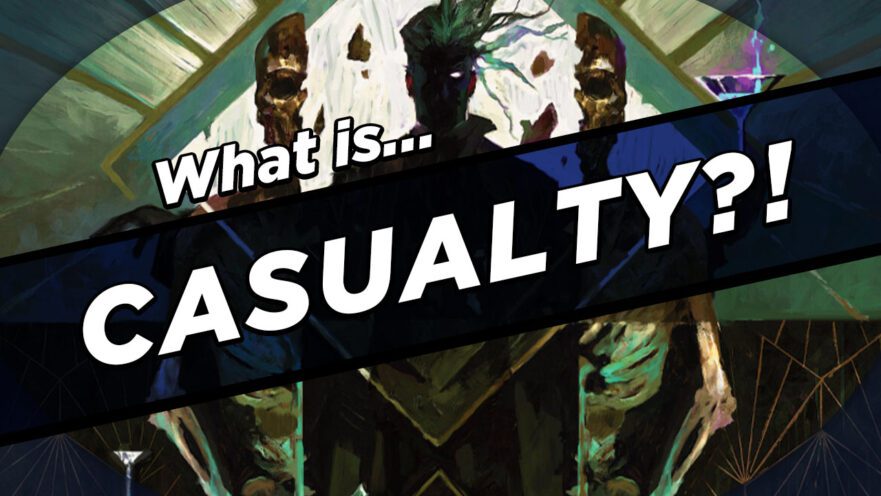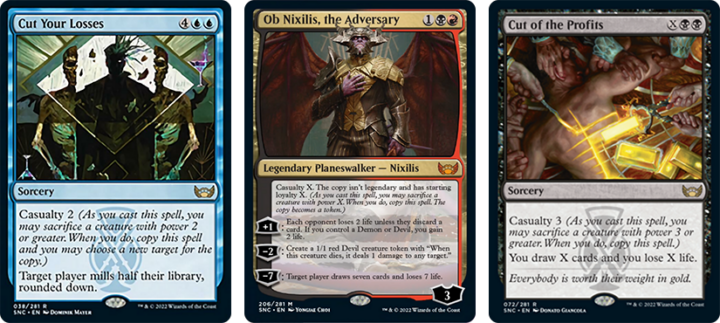Casualty will usually appear on instants and sorceries, although as Ob Nixilis, the Adversary shows, it can appear on any card type. It will always be written with a number next to it, and functions as an optional additional cost. Whenever you cast a spell with casualty, you may sacrifice a creature that has power equal to or greater than the casualty number. If you do, you create a copy of the original spell.
So this mechanic lets you trade in appropriately powerful creatures to copy a spell. Pretty simple in theory. Here’s some notes on how it works within the rules:
- The copy you create isn’t cast, it’s just put directly onto the stack, so casualty doesn’t trigger again.
- As it’s put onto the stack above the original spell, the copy will resolve first, then the original.
- The copy can be countered or responded to just as any other spell could be. Countering the original spell doesn’t affect the copy.
- The casualty ability itself can’t be stifled, as it’s not a trigger of any kind.
- You can only sacrifice one creature to pay for the casualty cost – no sacrificing multiple creatures to hit the number needed.
- If you can cast spells without paying their mana cost somehow (like with Omniscience) you can still pay the casualty cost as you cast the spell to create a copy of it.
Sacrificing a creature can be a steep cost, but copying spells is a pretty powerful payoff for doing so. If the spell is already worth casting once, having the option to cast it again certainly is nothing to sneeze at.
If you want to start copying spells with casualty, head over to cardkingdom.com!


